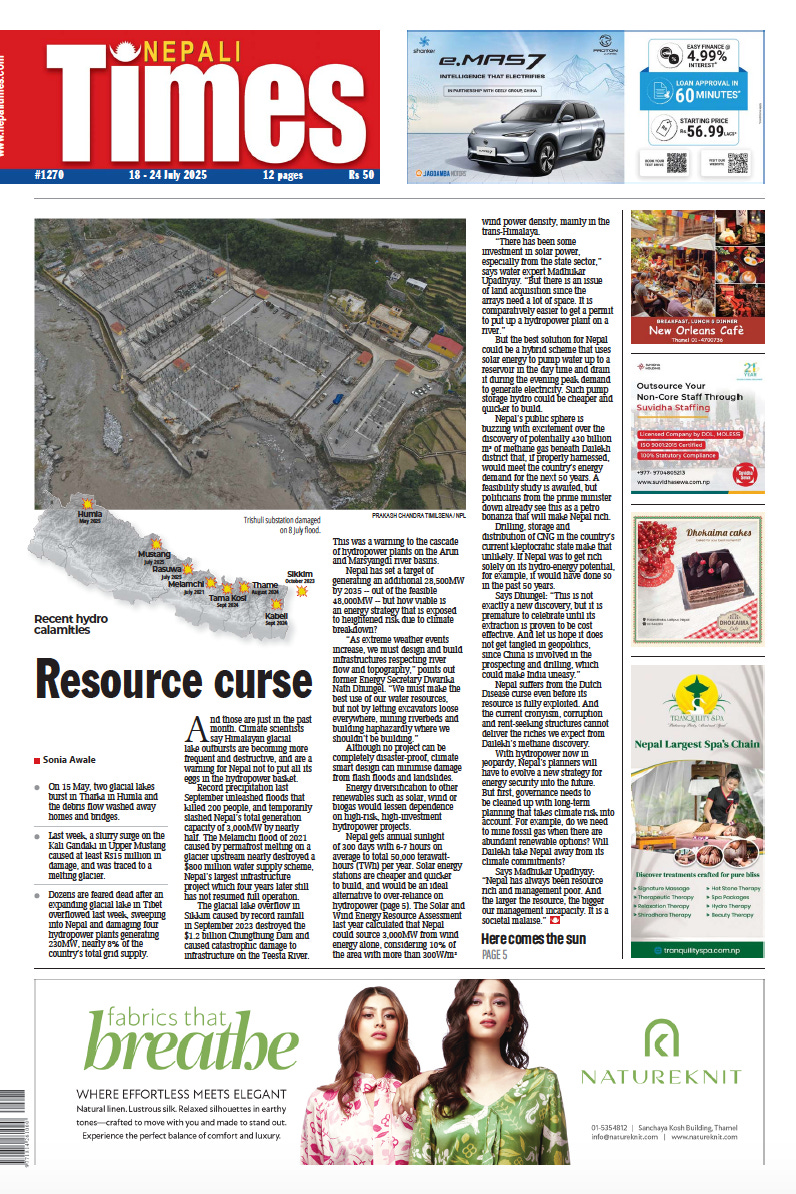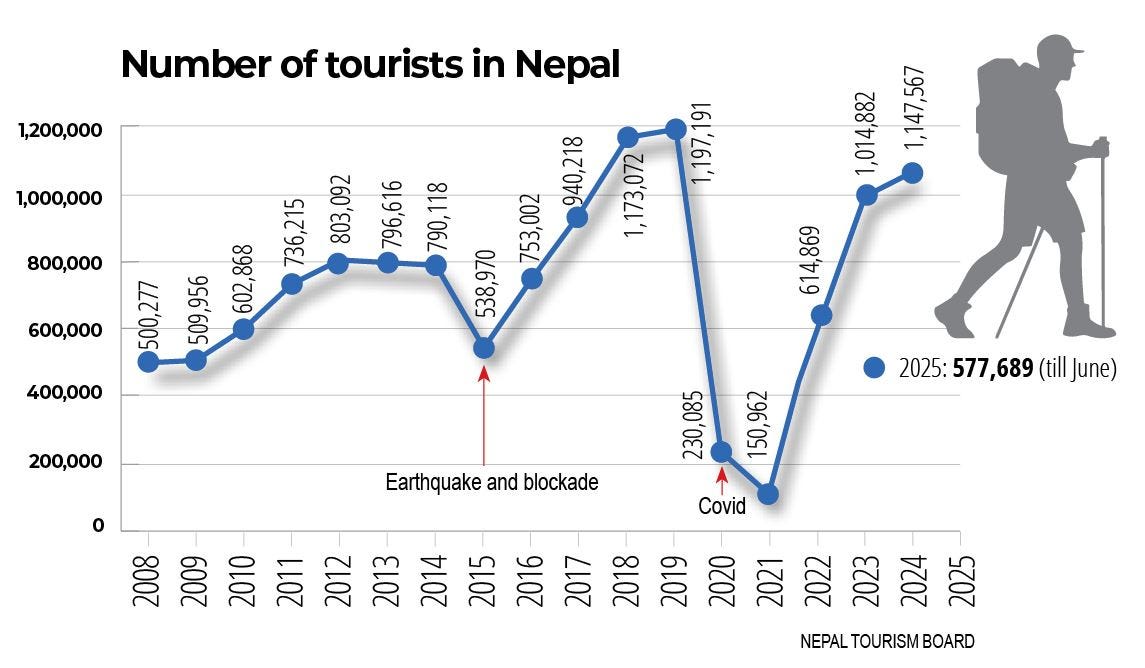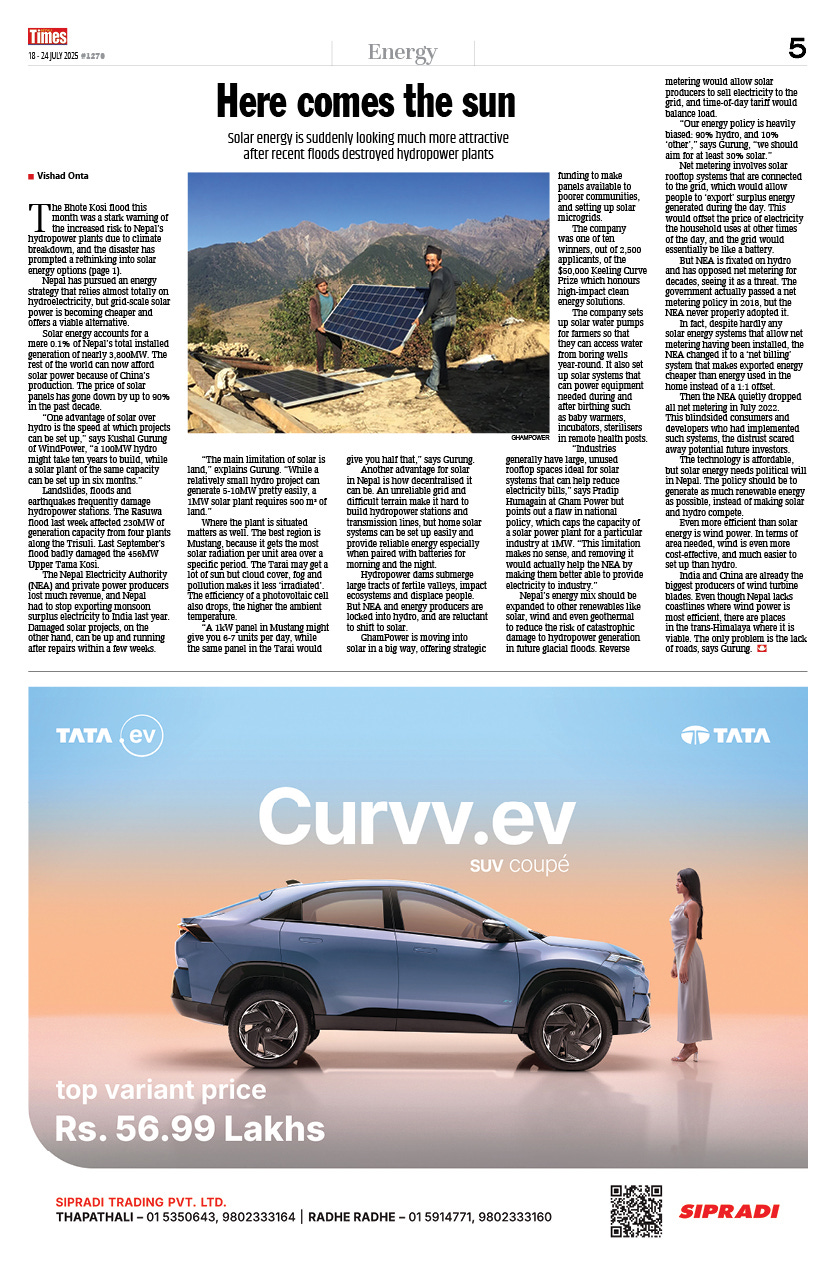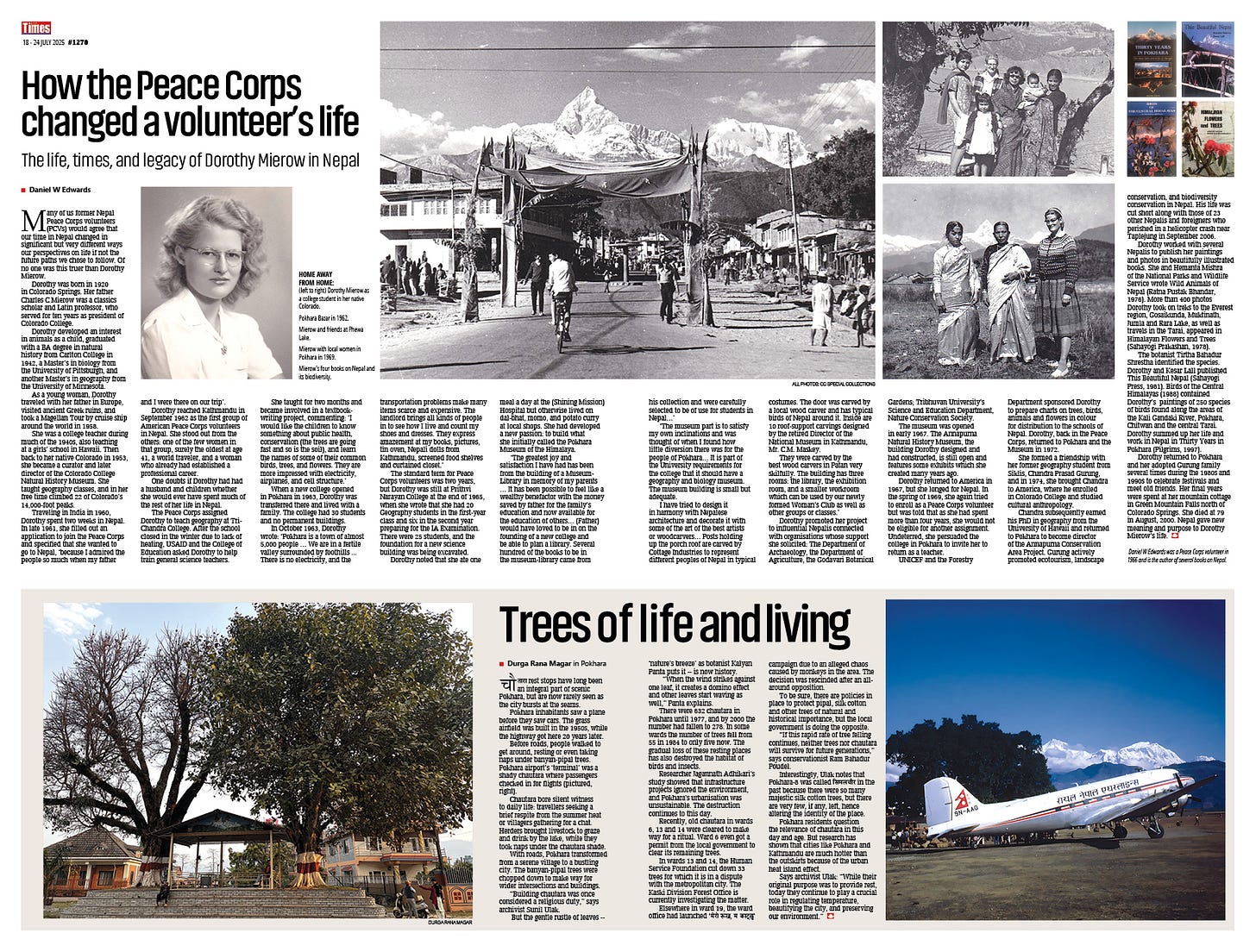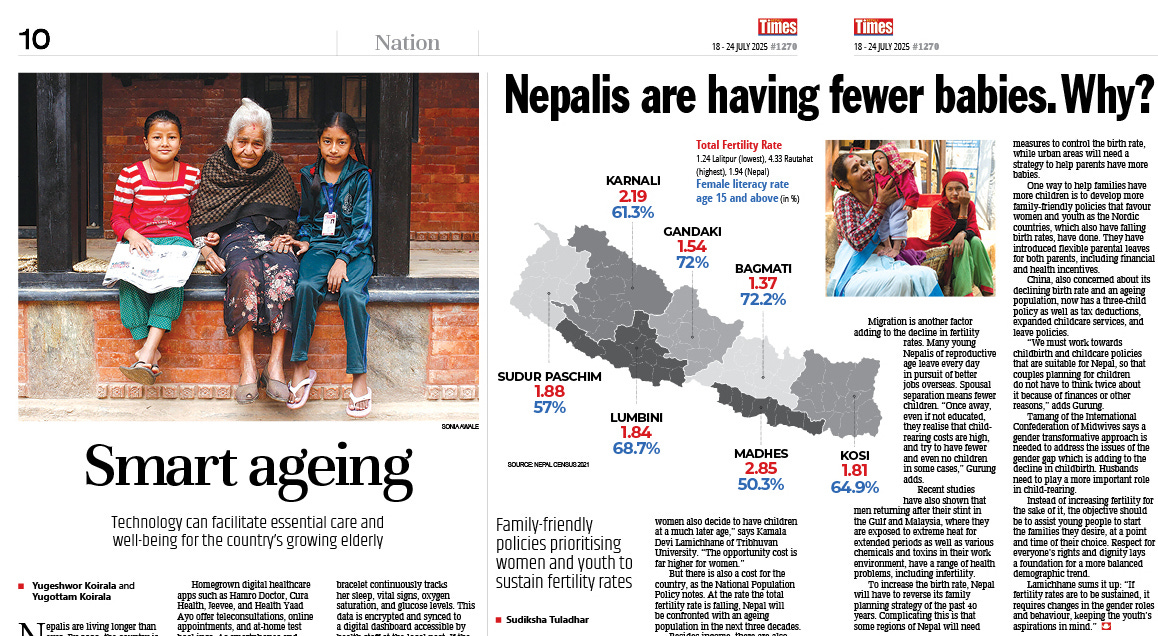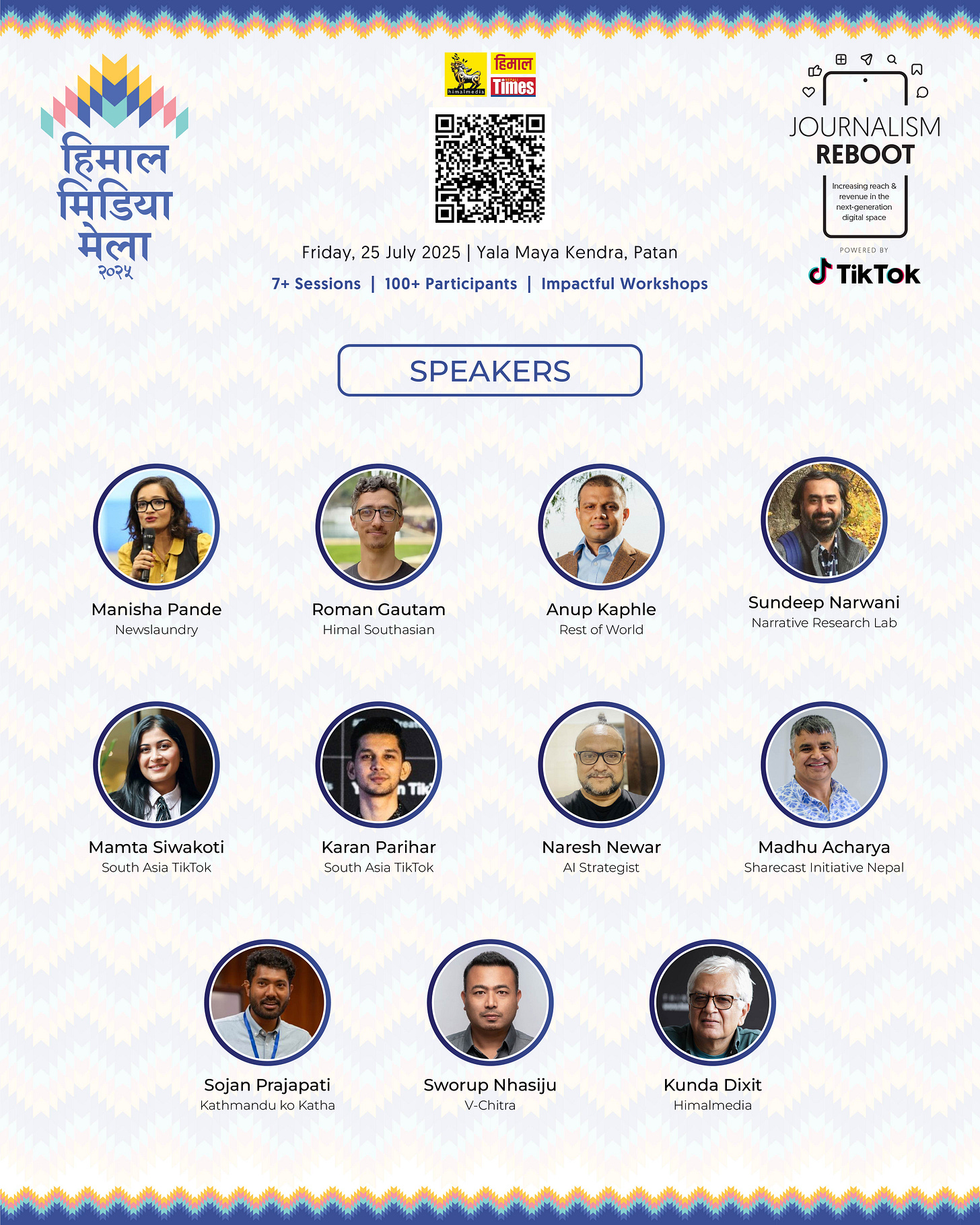Dear Fellow Travellers,
Comes news that the UK-based adventure travel company Much Better Adventures has ranked Nepal seventh in its listicle of top solo adventure travel destinations for 2025. What it means is this: Nepal is not for the faint-hearted. Go by yourself, don’t inflict that torture on anyone else.
Recent visitors will have noticed that Nepal has done its best to maintain its image as a High Adventure Destination. Even before you land in Kathmandu, the anticipation and excitement can be excruciating as a passenger ahead of you carries out a missed approach in the restroom at the back of the plane.
Finally on terra firma the waits at immigration, Gold Free x-ray and then luggage carousel at the main terminal are designed to make you terminally ill. Other airports have x-rays before you get on a plane, Kathmandu has one after you get off. The Civil Aviation Authoritarian of Nepal (CAN’T) has deliberately not put any Help Desk at the arrival hall, this is to allow selfie tourists a chance to figure out for themselves the convoluted visa-on-arrival procedures.
If you pass this difficult test without blowing a few gaskets, then congratulations! It means you have the survival skills, mental maturity, physical stamina, and emotional endurance to enjoy Nepal all by your lonely self.
And still on the subject of tourism, Nepali Times this week carries a Guest Editorial by Shailendra Thakali making a point that permits and fees on Mustang as well as other restricted trans-Himalayan districts are outdated and obsolete (Life restrictions on Upper Mustang, page 2). The commentary is generating intense debate on Nepali Times social media handles.
And on page 4, Sudiksha Tuladhar analyses recent tourism data for Nepal. The good news is that arrival figures are approaching pre-Covid levels, but the not-so-good news is that there should have been many more tourists. Nepal needs focused marketing to promote niche travel of its unique attractions (Tourism Needs a New Push).
This #1270 issue has a special focus on energy. On page 1, Sonia Awale says the Dailekh methane find may not be the bonanza that politicians are making it out to be. The report also analyses the impact of the recent spate of destructive climate-induced floods on Himalayan rivers, arguing that this may be as good a time as any to think of alternative renewables like solar, wind and pump storage hydro (Resource Curse).
And on page 5, Vishad Raj Onta outlines the prospect of developing grid-scale solar power in Nepal as a viable alternative to damming rivers. Solar is cheaper and faster to build, yet progress on this front has been slow because of the less-than-enthusiastic attitude of the hydropower lobby (Here Comes the Sun).
Daniel W Edwards profiles fellow Peace Corps volunteer in Nepal, Dorothy Mierow who stayed on in Pokhara as an educator, writer and naturalist (How the Peace Corps Changed a Volunteer’s Life, page 6-7). Still staying in Pokhara, Durga Rana Magar laments the loss of the city’s many shady chautara (Tree of Life and Living, page 6-7).
Nepal has an ageing population (Smart Ageing, page 10) because of longer lifespans and falling birth rates. Sudiksha Tuladhar finds a direct correlation between rising female literacy and falling child marriage and total fertility rate (Nepalis are Having Fewer Babies. Why? Page 10-11).
Next week is the 25th anniversary of the very first issue of Nepali Times in July 2000. On the occasion, Himalmedia is organising its Himal Media Mela on Friday, 25 July with workshops and tips for journalists on how to extend reach and revenue in the AI-driven next generation digital space.
Keynote speaker is Manisha Pande of the independent trend-setting digital portal, Newslaundry in India. Read an interview with her on page 9 (‘Journalism Will Never Be Out of Fashion …’).
Limited seats for the Media Mela are still available. Register here for a day of learning and experience sharing.
Looking forward to seeing you at the Mela.
Kunda Dixit



